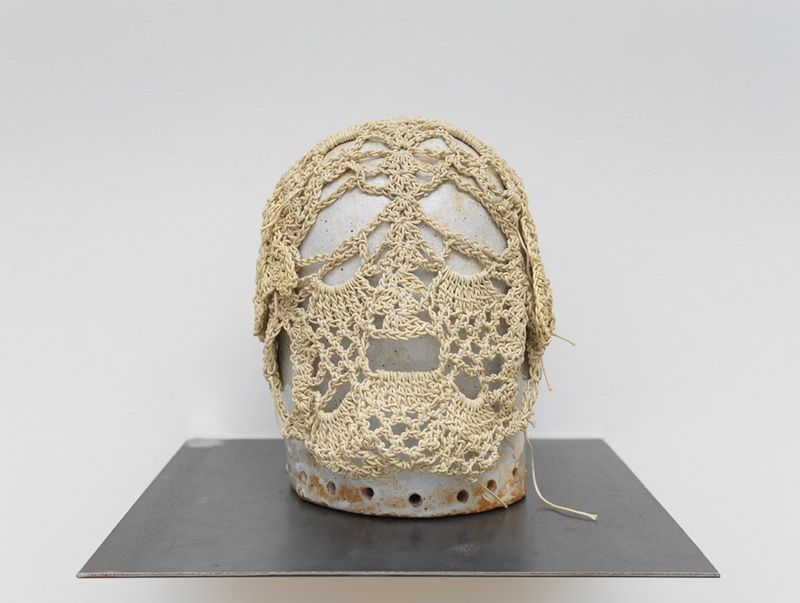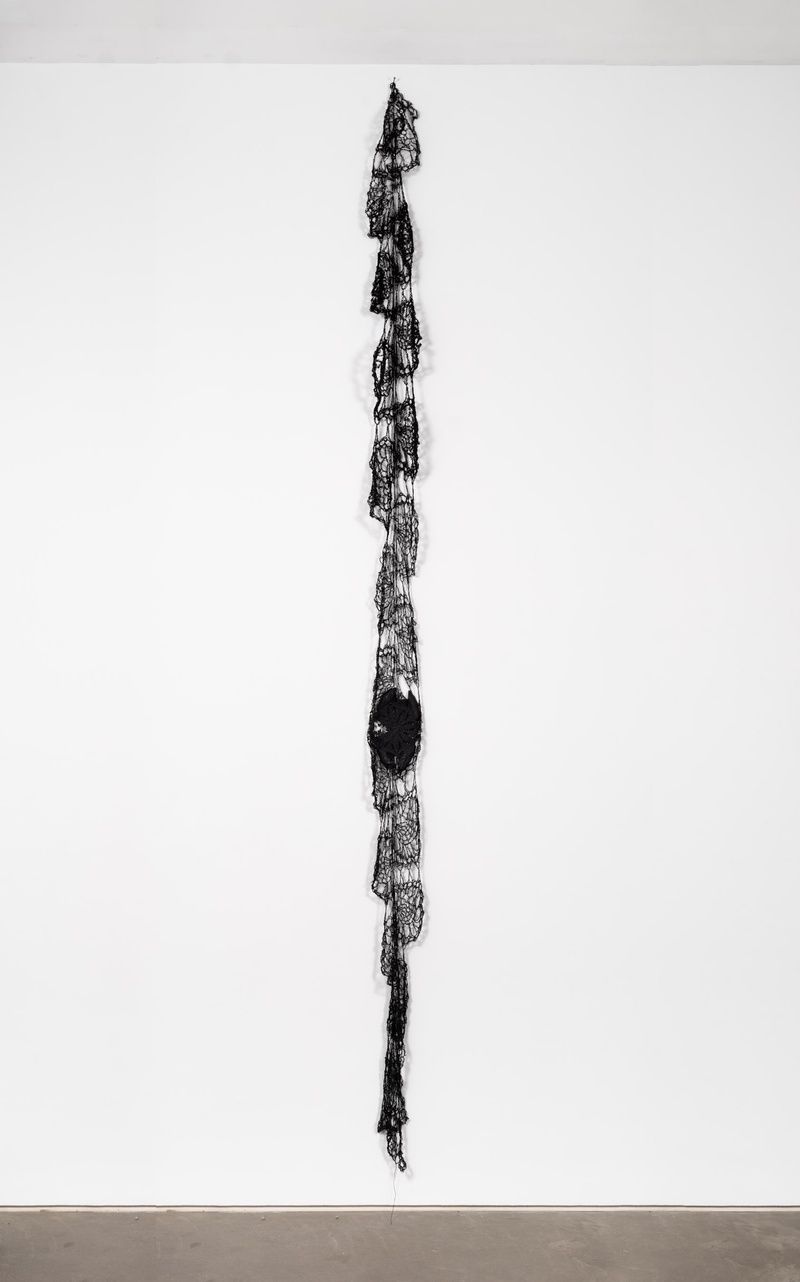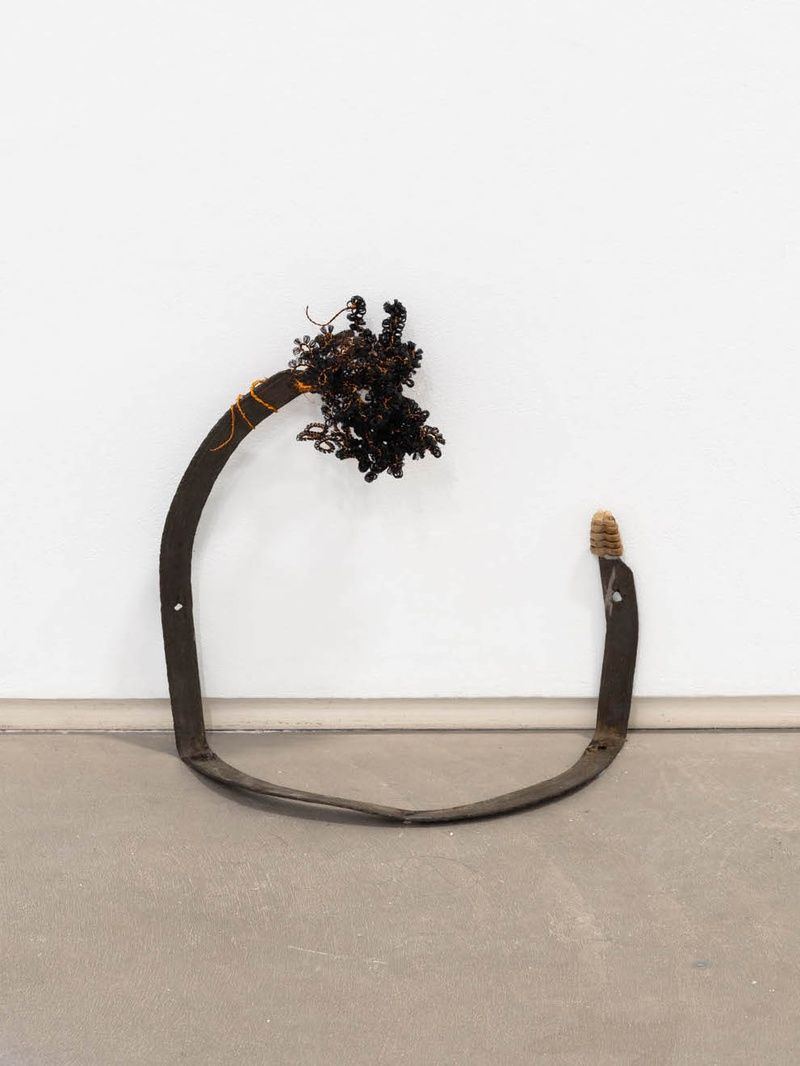James Fuentes Gallery
ektor garcia
The practice of making things means the inevitable development of familiarity with, if not mastery of, commonly used materials. What an artist does with that familiarity has always interested me: does it become a mother tongue that is translated through invention or does it harden into a formula, the death knell of imagination?
While every chance encounter, every book, every song, every object, and every material feels subject to ektor garcia’s artistic reimagining, in the many years that we have been close friends I have seen him revisit materials like ceramic, leather, glass, and copper (as sheets, as thread, as handmade links, as glaze). I have been confronted time and again with a feeling of unfamiliarity, occasional illegibility, wonder, and discovery that seem deeply embedded in the heart of his way of being and in his relationship to materials.
Pattern recognition and inductive reasoning are evolutionary gifts of the human brain that helped early humans predict weather, remember poisonous foods, and identify predators and prey. These are also the basis of cultural traditions and have been called the foundation of scientific inquiry.
For an artist, though, the recognition of a set of circumstances in the studio that yielded a “success” can insidiously codify into a ruleset, limiting the imaginative use of materials and critically distorting any sense of purpose.
Some reward artistic repetition with the convenient notion that such a thing as mature work exists—the contention that an artistic life is organized neatly into stages—like the lifecycle of a butterfly is. Others, myself included, might describe a state of self-quotation and repetition as the mark of the artistically undead.
It takes an intrepid and serious spirit to both acknowledge the “success” of one’s work in the studio and then to step back into the studio the next day with new eyes, set on discovering the unknown and unpredicted. This is how I have seen ektor work for as long as I have known him.
In his studio there is only an enthusiastic present that folds into itself both the past and any idea of the future. He never sanctifies past work for the sake of its age or history—in fact, some part of every “finished” work remains alive to him and available as ferment for the new—often finding itself dismantled and reconfigured—transfigured through a relationship with the studio activities of the present moment.
When his work leaves the studio it leaves an environment where its growth potential is indeterminate and unlimited.
The result is a practice that is in perpetual evolution, sprawling and splendid, familiar and deeply unfamiliar, collapsing in on itself and bursting forth to follow thrilling uncharted courses.
Louise Bourgeois, a heroine of ektor’s, once said that artists are privileged to be in touch with the subconscious (in service of being a better person in conscious moments). Being in touch with the subconscious requires ceding control to a medium: a vulnerable act of humility, curiosity, generosity, and trust. It is in the metaphysical space of the subconscious that truth is laid bare.
ektor’s work is not wrought through sheer will alone, but through a collaborative relationship with material and the Universe. It time-travels. It is restless and seeks in good faith.
—Cy Gavin
ektor garcia: esfuerzo is curated by Laura Brown.
ektor garcia (b. 1985, Red Bluff, California) received a BFA from the School of the Art Institute of Chicago and MFA from Columbia University, New York. He has presented solo exhibitions at Cabaret Voltaire, Zurich; SculptureCenter, New York; Henry Art Gallery, University of Washington, Seattle; Empty Gallery, Hong Kong; Cooper Cole, Toronto; and kurimanzutto, Mexico City; and has been presented in group exhibitions at the San Francisco Museum of Modern Art; New Museum, New York; El Museo del Barrio, New York; Prospect 5 New Orleans; 80WSE, New York; Museo Tamayo Arte Contemporáneo, Mexico City; and LAXART, Los Angeles; among other venues. His work is included in the collections of the Whitney Museum, New York and San Francisco Museum of Modern Art. Garcia lives and works nomadically.

Works

negritejido, 2019
Crochet thread and cast aluminum with patina
180 × 13 inches

víbora, 2023
Found metal, horsehair, copper wire, and rattlesnake rattle
12 × 12 × 5 ½ inches

portal LES, 2023
Crochet leather, raw copper, and copper wire
86 × 18 inches

cabeza güera, 2019
Glazed ceramic and crochet cotton
10 × 7 × 7 inches